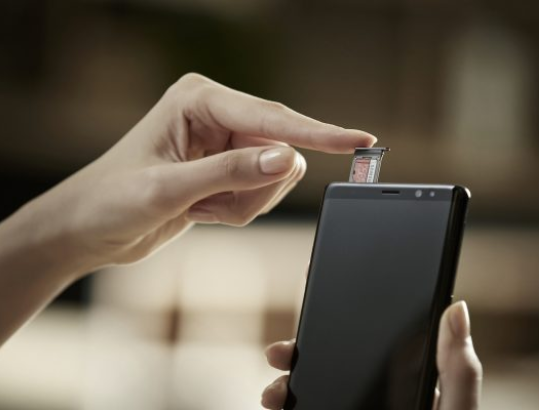Share This
Related Posts
Tags
Galaxy Note8
By Anca Gagiuc on Sep 18, 2017 in Technology
It’s not easy to follow the footsteps of a maligned predecessor. After last year’s disastrous Note7, many believed the Note8 would never exist. But Samsung has launched the Note8, aiming at a righting the wrongs of the previous iteration. T he new phablet, launched in August, does its best to restore customers’ faith in the brand, but not without a hefty price.
he new phablet, launched in August, does its best to restore customers’ faith in the brand, but not without a hefty price.
How big is too big? At 6.3-inches, the device feels like a Gulliver. Don’t even dream about using it with only one hand. The front is all screen with just a thin bezel top and bottom and curved edges that bend towards metal sides. However, the curvature of the screen seems reduced, compared to the Note7—the change means less real estate on the rounded edges, which makes using the stylus easier. For protection, its glass front and back are coated in Corning Gorilla Glass 5.0.
The Super AMOLED display sports bright, vibrant colors, with deep blacks and beautiful viewing angles. It features the same virtual home button and pressure-sensitive screen as the Galaxy S8. The fingerprint scanner is placed on the back of the phone, to the right of the camera module, which takes some finger gymnastics to reach it.
Samsung offers both iris-scanning and face-scanning unlock systems, so you don’t have to rely on the fingerprint scanner as much. Still, the face-recognition feature doesn’t feel secure enough just yet, even though the South Korean company has improved it and works faster and more reliably. The iris scanner on the other hand, is fast and as secure as the fingerprint method, that if don’t mind holding the phone up, awkwardly close to your face while making your eyes as big as you can.
Specs-wise, the Note8 is powered by Qualcomm’s Snapdragon 835 processor, has 64GB of storage (markets outside the U.S. will see options with 128GB and 256GB), a microSD card slot and 6GB of RAM. The smartphone supports wireless charging, NFC and Bluetooth 5 aside the usual LTE, Wi-Fi and GPS. One downside, an understandable change, which still raises many eyebrows, is the battery shrinkage to 3,300mAh.
Probably the main attraction of the Note8 is the S Pen stylus, which workd incredibly well and can be used to take notes, mark up screenshots, doodle, select text or navigate the phone without having to touch it with your finger. It’s especially fun to use in LiveMessages—a feature that lets you record animated GIFs of handwritten messages or drawings. It reminded me of the handwritten messages you can send in Apple’s iMessage, the difference being that with Samsung’s, you can share them through any app that supports animated GIFs.
This year’s stylus comes with a finer point and several levels of pressure sensitivity (compared to the 2015 model). It has the same level of water resistance as the rest of the phone—it’s IP68, meaning International Protection to dust, dirt and sand (represented by the figure 6 in the acronym), as well as waterproof, specifically it can be underwater for 30 minutes at depths of up to 4.9 feet.
Another standout feature is the new dual camera. The 12-megapixel camera setup consists of a standard wide-angle lens and one with a short “telephoto” option that gets you a bit closer to your subject. Both have optical image stabilization, but the wider-angle camera has a higher quality sensor with larger pixels, as well as dual-pixel autofocus, which aren’t available on the telephoto. The wide lens has a f/1.7 aperture, while the tele camera stops at f/2.4. The differences between the two are quite big in the end result, with the secondary camera far inferior to the main one.
The Note 8 comes in midnight black and orchid gray and starts shipping September 15. Price-wise, get ready, the device starts at $930 unlocked. Even though this is Samsung’s best smartphone, probably it feels like a good deal only to those die-hard Samsung and especially S Pen stylus fans.
